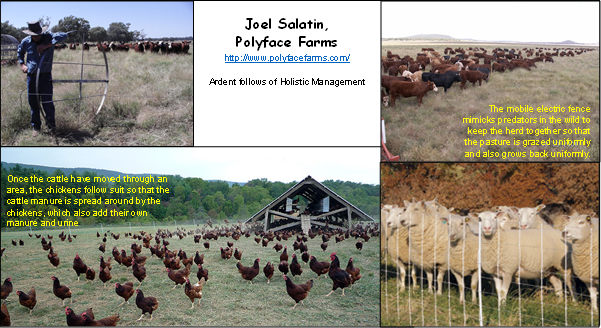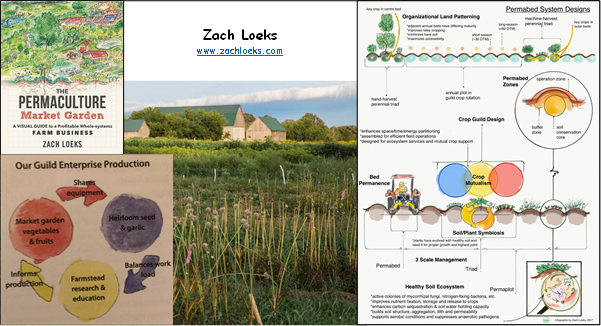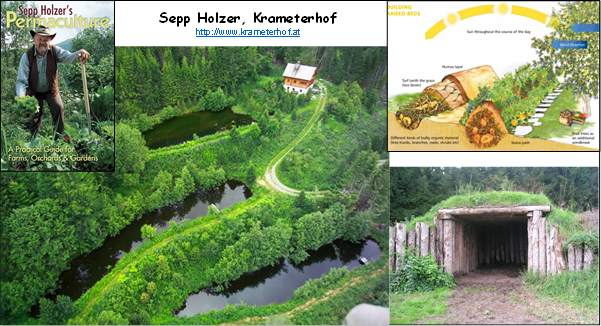
FRIDAY, JAN 27, 2023: NOTE TO FILE

Module 3-29
Design process and case studies
This Section initially unpacks a Permaculture design process, followed with a few collages of best practice farms, and finally, some further case study weblinks. This wealth of resources will provide students with ample information to digest well beyond the completion of this course.
6.1. Permaculture Design Process
To recap, of the sustainable agricultural systems, Permaculture lays out the intrinsic design principles; the Keyline System outlines the design sequence for these principles; and, Holistic Management provides the fundamental understanding of the whole integrated system. These three systems are now developed into a Permaculture design process as will be explained by subsequent slide inserts. Whilst there are many ways to undertake a Permaculture design process, the process explained has been developed along the lines of a project management stage design process. In the initial stages of a project, much research is undertaken in order to fully understand the nature of the project, but as this information is assembled and analysed, design solutions start to emanate, which in turn are further refined until a project design is reasonably completed and can be implemented from the detailed design and specifications. The Permaculture design process is explained in the slide below.

6.2. Case Study Collages
Case Study Collages have been compiled for the following projects / farms:
· Joel Salatin, Polyface Farms
· Richard Perkins, Ridgedale Farm
· Sepp Holzer, Krameterhof
 .
.



6.3. Other Case Studies
‘Wilding’ and Agro-forestry: the Knepp Case Study
Knepp shows us that animals are ecological engineers. Hardy English Longhorn cattle on land they have rewilded from arable cropping. In 2000, the owners of a large dairy and arable farm in southern England avoided the bankruptcy that threatens so many farmers by deciding to sell all their expensive machinery and follow a different pathway. Acutely aware of the degradation of land and loss of biodiversity caused by the ‘conventional’ agriculture they had been practising, they decided to join forces with an unconventional agricultural ecologist from The Netherlands. Frans Vera is convinced that much of northern Europe should be open-canopy woodlands with large expanses of wildflower meadows and grasslands created after the last ice age by ancient ungulates (hooved animals) that recolonised the land along with vegetation. Their behaviour created the landscapes and made it amenable for the wide diversity of wildlife that we are currently losing. At Knepp, the owners decided to use modern descendants of these hooved animals that mimic the behaviour of the ancient breeds that are now extinct. They used hardy Longhorn cattle, Tamworth pigs, deer and Exmoor ponies, roaming free on the land, to trample and rootle and bring the soil and vegetation back to life. As a result, the land is succeeding to scrubby, wildflower grasslands with trees and wildlife has returned; we can see that animals play an essential role in rewilding and land management as ecological engineers. These animals have regenerated the land and must be kept on the land to avoid succession to closed-canopy woodlands, which are less species diverse and would, therefore, entail a loss of biodiversity. Knepp now produces a range of food products from the regenerated land. Watch the video in which Isabella Tree explains the process.

Mark Shepard: New Forest Farm
Alley-cropping is another form of agro-forestry with many benefits in terms of the mycorrhizal fungi that are maintained by perennials. For example, Mark Shepard’s temperate climate permaculture project in Wisconsin, New Forest Farm, combines polycultures of productive trees with animals and a variety of annual or perennial crops. He used agro-forestry combined with permaculture design to restore land that had been badly degraded by decades by inappropriate annual cereal cropping. In the video below (14 mins) he explains the need to develop perennial staples for food security in a changing climate, and applying ecology, working with nature through succession to create flexible but resilient system and ensuring a yield for income.
David Holmgren: Melliodora
While Shepard’s farm is about 42 hectares, small-scale permaculture food forest projects are also possible in the peri-urban areas of large towns and cities, such as, David Holmgren’s design for Melliodora on 2 hectares on the periphery of Hepburn, a small town in Victoria, Australia. In this short tour (11 mins) of the property with David and his wife Sue Dennett, we can clearly see the potential for all aspects of permaculture as we deal with them in this dimension.
Eric Toensmeier: The Carbon Farming Solution
Back in the US, in a cold-climate permaculture project designed by Eric Toensmeier in his suburban backyard we can witness another range of potential for this practice. Toensmeier is one of the leading experts on food forestry and has co-authored the most in-depth books on the topic for cold and temperate climates. He is also a senior fellow at the Drawdown Project, a lecturer at Yale University and the author of the definitive work on carbon sequestration in farming systems, The Carbon Farming Solution. At home, his backyard food forest is remarkably productive. In this video(14 mins), we can see how he has used the principles of permaculture in his design.
[All examples are small scale operations that cannot scale up to feed 8 billion people even if 7 billion become full-time permaculturalists. Not good news for 10 year olds. Sorry about that. Those who would rather believe than know are the dynamic to propels the Anthropocene.]
Module 3, lesson 30
